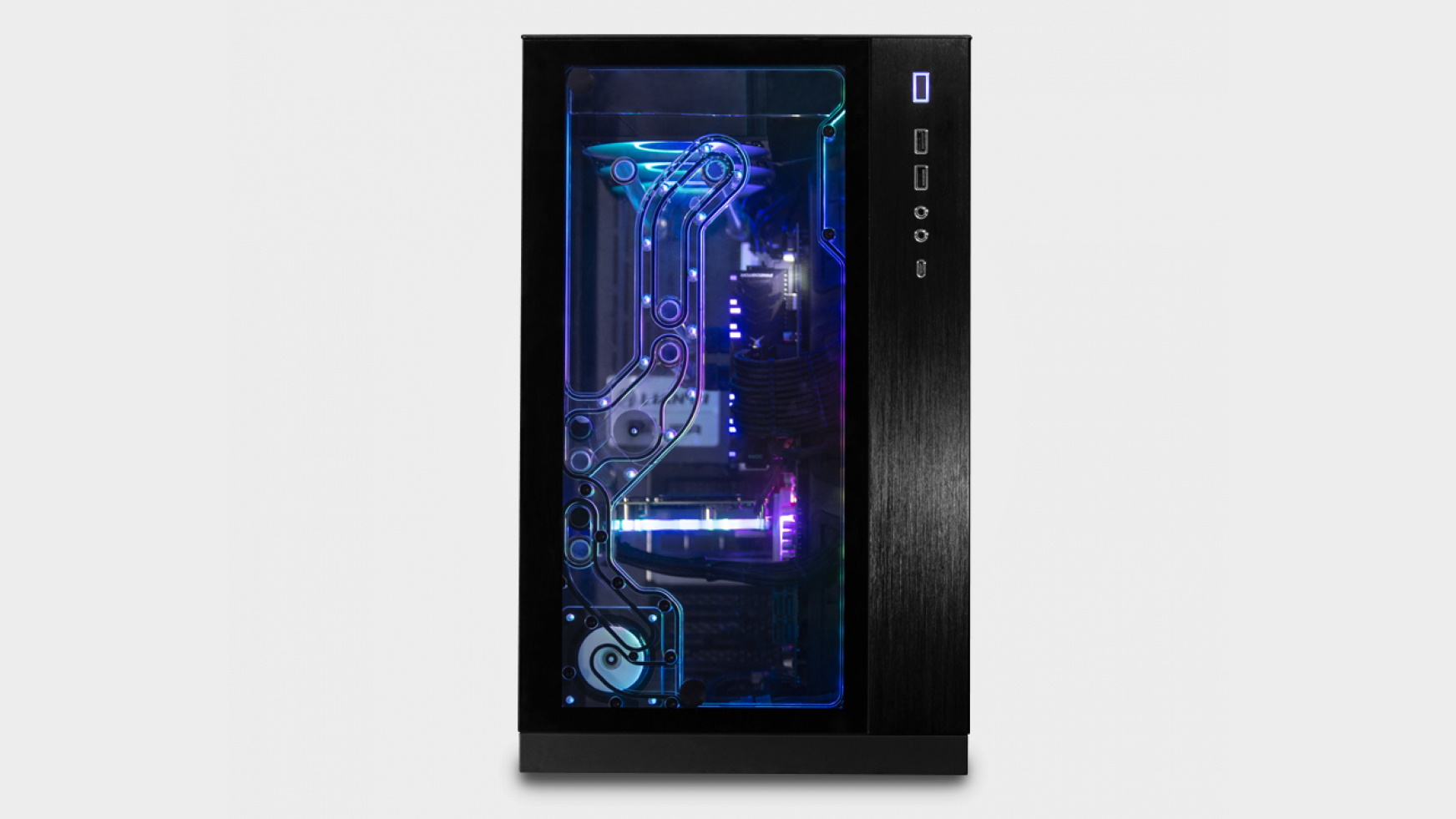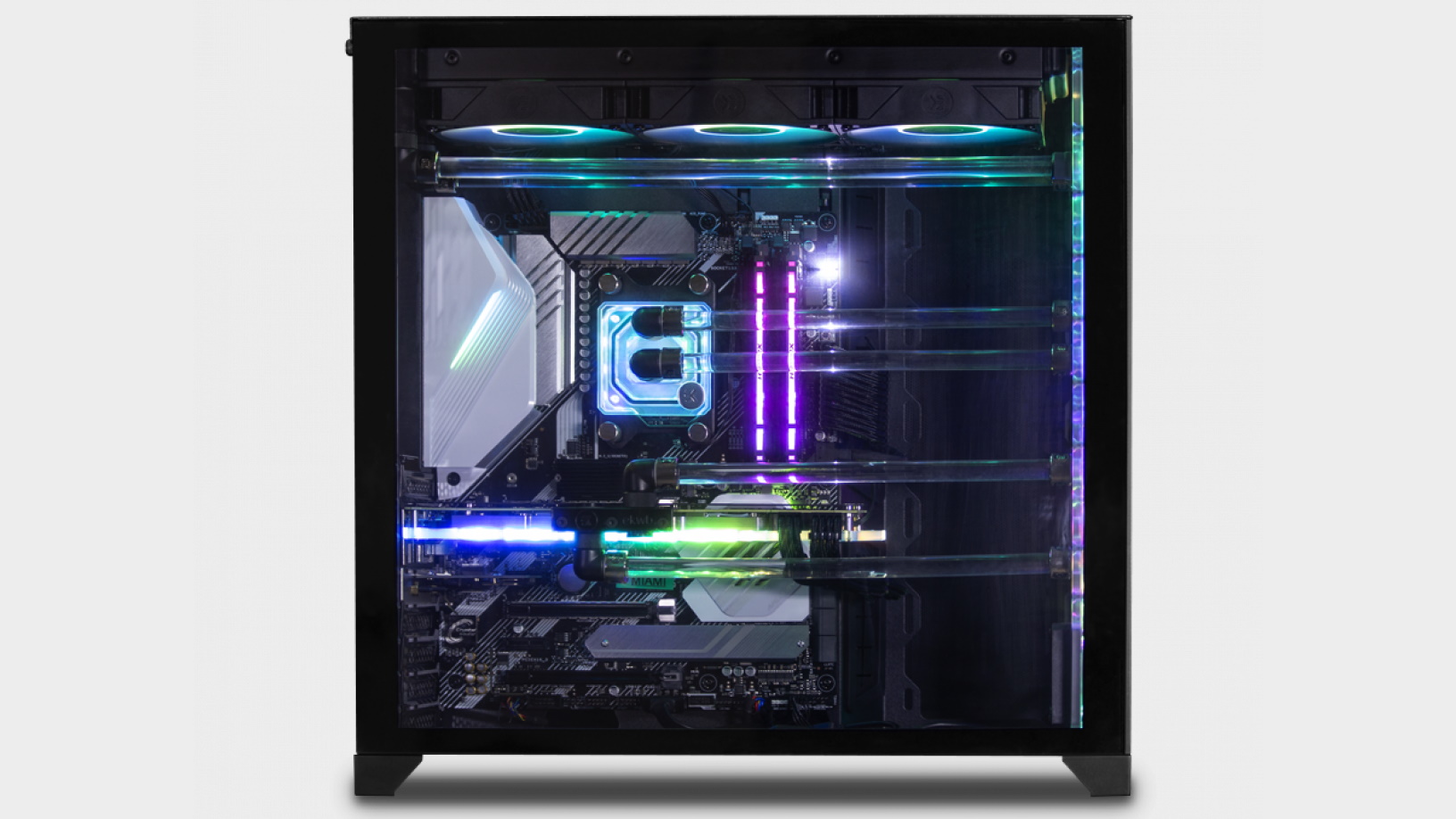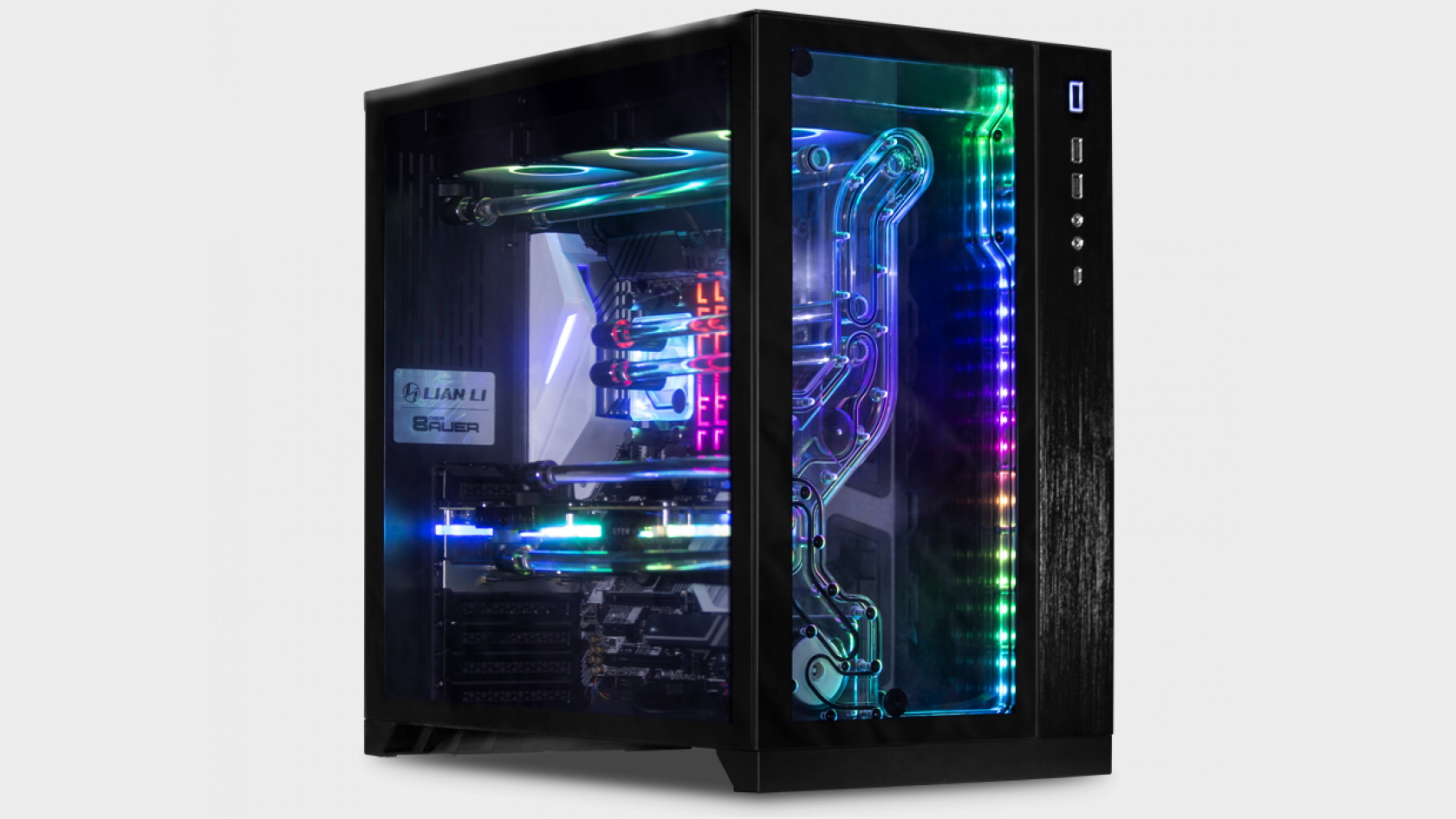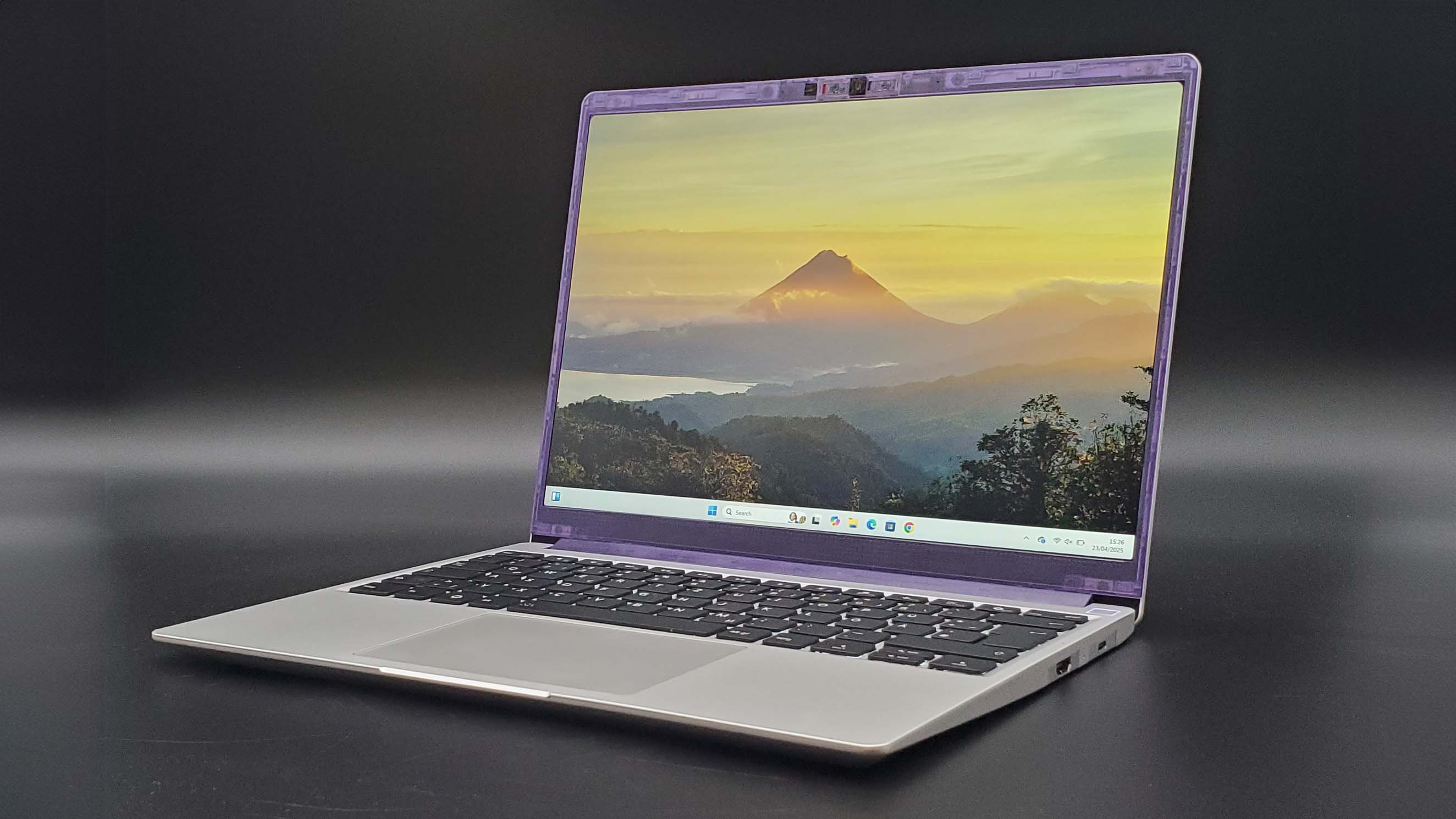Our Verdict
A beautifully crafted and visually arresting water cooled PC that packs an impressive punch for Full HD gaming.
For
- Looks absolutely incredible
- Whisper quiet
- Great 1080p performance
Against
- Wimpy storage
- Upgrading isn't exactly simple
PC Gamer's got your back
It feels like a strange time for a new system builder to enter the fray to try and grab the crown for the best Gaming PC, but that's exactly what EK has done with the 250 Conquest. EKWB is best known for its water cooling hardware, where it can be found manufacturing water blocks, tubing, pumps, fittings, reservoirs (Jacob recently upgraded his own PC using EKWB's kit). Basically all the stuff you need for a serious high-end build. It's a respected name, and is generally considered to be one of the better brands when it comes to mixing computer components with the old H-2-O. It shouldn't come as a surprise then, that its PCs all boast water cooling as standard.
CPU: AMD Ryzen 5 3600X
GPU: AMD Radeon RX 5700
RAM: 16GB G.Skill Trident RGB 3200MHz
Motherboard: Asus Prime X570 Prime
Power Supply: EVGA 600W 80+ Bronze
Storage: 500GB Samsung 970 Evo NVMe SSD + 1TB Seagate Barracuda HDD
Chassis: Lian-Li PC-0011D Black
OS: Windows 10 Home 64-bit
Connectivity: Gigabit Ethernet, 802.11ac, Bluetooth 4.2
Weight: 40 lbs (18Kg)
Size: 10.7 x 17.5 x 17.5 in (272 x 446 x 445mm)
Warranty: 3 years
There are six different configurations available right now, with this EK Fluid Gaming PC 250 Conquest representing the most affordable option at $1,899. Water cooled PCs are usually the reserve of high-end system builders, so it's good to see a more affordable build (relatively speaking at least), even if ultimately we would recommend spending a little more to get slightly better components. But I'm getting ahead of myself, hold that thought for now.
Before you can use the machine, you have to perform an important task: Fill up the loop. Despite 'plug and play' being emblazoned on the sheet that falls out as you extract the PC from its cozy box, this isn't a system you can plug in straight away. There's no water in the loop, so doing so would not be good for the CPU or GPU. The distilled water, or Cryofuel as EK terms it, is in the box though, along with a filling bottle (which makes the whole filling process a breeze).
The instructions are easy enough to follow: Pour the Cryofuel into the fill bottle, remove the front and side panels, unscrew the fill port, fill up the distribution plate, and then turn it on. You'll need to redo this a couple of times as the liquid is pushed through the machine, and tilt it slightly to free any bubbles, but once done you'll have a system that's ready to roll.
Once filled up, this is a heavy system (40lbs is a decent weight for any PC), and it's stocky too—much wider than a normal mid-tower case at a shade under 11 inches. It's something to bear in mind if you're looking to place it on the desk (and you really should, this is a machine that needs to be shown off). You can play around with the lighting in the installed Asus Aura Sync utility to find your perfect light show, although the default is pretty spectacular.
The machine as reviewed employs an AMD Ryzen 5 3600X alongside an AMD Radeon RX 5700. Two decent mainstream options, both from the red camp, that pretty much nail 1080p gaming as we know it. Both are water cooled, using EK's hardware obviously, and are fed into the large distribution plate at the front of the chassis. This plate is lit up by RGB LEDs too.
EK has used a Lian Li PC0011D to show off its builds, and the end result is an incredibly good looking system. Something that is helped by the fact that the power supply is hidden behind the motherboard tray, and all cable routing is pretty discrete. The whole thing is lit up beautifully as well. It's rare for RGB to not end up looking like unicorn vomit, but EK has managed it.

The rest of the specifications is solid, if nothing too exciting. The Asus Prime X570 Pro is a capable motherboard, that boasts a decent feature set and looks good bathed in the rippling RGB lights. This motherboard doesn't support Wi-Fi as standard, but EK has bundled a daughter card powered by an Intel 3168 to offer up support for 802.11ac networks.
You get 16GB of DDR4 3200MHz RAM in the system as standard, which should be fine for a few years yet. The review sample has a Crucial Ballistix kit, although EK has now switched over to G.Skill Trident RGB 3200MHz memory going forward. The RGB of the Ballistix memory is slightly out of sync with the rest of the system and the colour doesn't quite match the motherboard, but I obviously can't say if the G.Skill memory fairs any better. The hard pipes from the CPU block run in front of the RAM sticks, but there is enough clearance to get these sticks out, or add more easily enough.
The decision to combine a 500GB Samsung 970 Evo NVMe SSD alongside a 1TB hard drive, is the only real mark against the system. It may be a practical and a good value call, but the idea of putting any modern game on a spinning hard drive in 2020 makes me jittery. A SATA SSD would have been my preference here. The fact the boot drive only has a capacity of 500GB isn't ideal either, as our benchmark suite pretty much filled up the drive before we got started. The 970 Evo is a great drive, but given this motherboard/CPU supports PCIe 4.0, that feels a bit of a missed opportunity.
This is a hard pipe build, which means that swapping out components isn't exactly easy. It's not impossible though, and the way EK has approached this build, with it's straight runs to the distribution plate, means that you don't need to dismantle the whole thing if you do want to upgrade a single component. You will have to drain the system though—at least you get a drain pipe in the kit, so it's certainly possible.

Cinebench R20: 3655 cb (multi-core) 499 cb (single-core)
Geekbench 5: 6899 (multi) 1271 (single)
CrystalDiskMark Sequential (Read): 3,569 MB/s
CrystalDiskMark Sequential (Write): 2,476 MB/s
PCMark 10 Express: 5298 points
x264 HD v5.0: 33 fps
Metro Exodus (1080p): 64 fps
Far Cry: New Dawn (1080p): 92 fps
Division 2 (1080p): 75 fps
Total War: Warhammer II (1080p): 80 fps
Shadow of the Tomb Raider (1080p): 106 fps
3DMark Fire Strike: 20,116 points
3DMark Time Spy: (GPU) 8316 (CPU) 6787
The Ryzen 5 3600X is a beefy 6-core, 12-thread CPU that relishes a good multi-threaded app to chew through. Under this level of cooling the chip sits close to the 4.4GHz maximum boost clock far more than it does the stock 3.8GHz, and in the straight CPU tests it shows off its capabilities well. If you need serious horsepower for rendering and/or video encoding, then you'll probably want to go for the 270 Conquest, which is home to the 3900X, but for more normal work, this is a solid chip.
Gaming performance at 1080p is also healthy, with all of our tests producing silky smooth frame rates at the highest in-game settings. We're so used to Nvidia's RTX graphics cards making it into pre-built systems that it's easy to forget that the AMD Radeon RX 5700 is a more than capable card for normal gaming. You obviously miss out on being able to run ray tracing on the few titles that support it, but that's not the end of the world. 1440p isn't out of the question, although on the more demanding titles you may have to do a bit more than simply set everything to the maximum settings.
All that said, we would normally expect a bit more raw performance for this sort of cash. The thing is, those water blocks, fittings, pipes, and that massive front distribution plate cost serious money, so with those things taken into account, the overall value and performance isn't bad. Not bad at all. Yes you could build a system that offered up the same performance for a lot less than this, but it wouldn't look anywhere near as good, and wouldn't be as quiet.
It's worth noting here that while EK does pitch the PC 250 Conquest's quietness as one of its main selling points, but it isn't a completely silent rig, at least not all the time. In regular use it is whisper quiet, especially when compared to a PC running an AIO cooler, but push the CPU hard in something like Cinebench R20, and the three fans in the ceiling do step up a gear, and it's noticeably louder. At this point the CPU still only tops out at 72°C though, so at least you know you're getting the most from the chip.
Overall then, there's a lot to like here. It's an incredibly attractive build, and one that has been put together very well. The fact that it's fully water cooled, but you can still access the main components fairly easily and even upgrade as you need, is certainly a positive point. I would have preferred beefier storage, with a 1TB PCIe 4.0 NVMe SSD for starters, but this can't take away from what is otherwise an incredible build. EK has said that system configuration options are on the way as well, so you can pick a bigger SSD when you buy it.
There's always the big divide when it comes to prebuilt PCs: one side calling for everyone to build their own systems, while the other wants the peace of mind that the warranty of a pre-built can bring. The fact that EK has produced a machine that looks as good as this, runs as quiet as it does, and is backed up by a healthy three year warranty makes for a compelling argument. I usually recommend everyone builds their own system, at least once (you just learn so much), but if you're seduced by this, I certainly wouldn't hold it against you.
A beautifully crafted and visually arresting water cooled PC that packs an impressive punch for Full HD gaming.
Alan has been writing about PC tech since before 3D graphics cards existed, and still vividly recalls having to fight with MS-DOS just to get games to load. He fondly remembers the killer combo of a Matrox Millenium and 3dfx Voodoo, and seeing Lara Croft in 3D for the first time. He's very glad hardware has advanced as much as it has though, and is particularly happy when putting the latest M.2 NVMe SSDs, AMD processors, and laptops through their paces. He has a long-lasting Magic: The Gathering obsession but limits this to MTG Arena these days.



